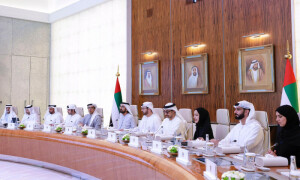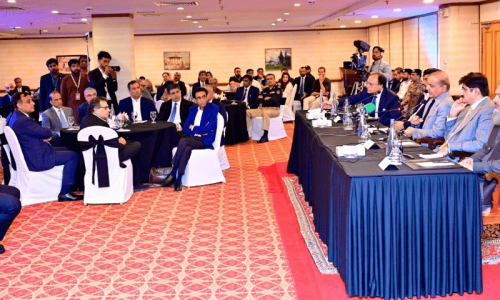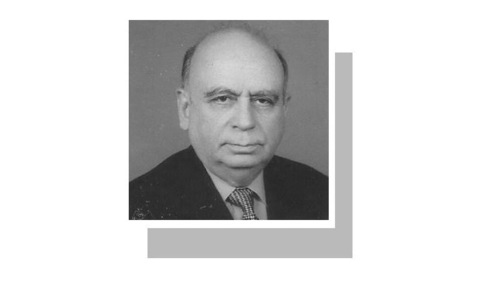KARACHI: The air of the city is polluted with high levels of lead and cadmium that pose a grave risk to public health, says a recent study that also points out that the average concentration of these trace metals found in residential areas of Karachi is higher than those found in Delhi and Beijing.
The study conducted by the Pakistan Council for Scientific and Industrial Research’s (PCSIR) Centre for Environmental Studies was authored by Durdana Rais Hashmi and co-authored by Dr Akhtar Shareef, Dr Alia Munshi and Farooq Ahmed Khan.
Know more: Gasping for air
Under the study, 108 samples of particulate matter (a small discrete mass of solid or liquid matter that remains individually dispersed in liquid or gas emissions) were collected from main roads, roundabouts and open places along the busy roads of Karachi and these locations were categorised as commercial (54 sites), residential (36 sites), industrial (14 sites) and urban background (four sites) zones.
Particulate matter includes a mixture of solids and liquid droplets. Particles come in a wide range of sizes. Those less than 10 micrometres in diameter (PM10) are so small that they can get into the lungs, potentially causing serious health problems.
Ten micrometres is smaller than the width of a single human hair.
According to the study’s findings, the average concentration of lead in PM10 samples found in the city is 1.163 µg/ m3 and that of cadmium 0.008 µg/ m3 whereas the limit suggested by the WHO is 0.500 µg/m3 for lead and 0.005 µg/m3 for cadmium.
Further analysis of the data shows that the maximum concentration of lead and cadmium found in the commercial zone is 3.5µg/ m3 and 0.019 µg/ m3 respectively. Maximum concentration of lead and cadmium in residential areas is 3.1 µg/ m3 and 0.024 µg/ m3. Maximum concentration of lead and cadmium in the industrial zone is 2.34 µg/ m3 and 0.020 µg/ m3.
The urban background zone that covers areas having sparse population with low vehicular traffic, the maximum concentration for lead and cadmium is 0.12 µg/ m3 and 0.005 µg/ m3 respectively.
The research provides a comparison of metal concentrations in particulate matter observed in the present study with other parts of the world. For instance, the metal concentration in Delhi’s residential zone was found to be 0.01-0.02 µg/ m3 (cadmium) and 0.27-0.46 µg/ m3 (lead) and Beijing 0.005 µg/ m3 (cadmium) and 0.33 µg/ m3 (lead).
The US Environmental Protection Agency guidelines on lead and cadmium levels in particulate matter are 1.500 µg/ m3 and 0.006 µg/ m3.
“Growing number of vehicles, consumption of leaded gasoline and poor road conditions are major causes for high concentration of lead and other trace metals in Karachi’s environment, which is a great threat to public health,” the study says.
In recent decades, according to the research, there has been a growing concern over the potential contribution of ingested dust to metal toxicity in humans. Some trace metals are harmless in low concentrations such as copper and zinc, but some metals like lead and cadmium are toxic even in extremely low concentrations and are potential cofactors, initiators or promoters in many illnesses including cardiovascular diseases and cancer.
A number of studies, it says, have linked particulate matter with a rise in premature deaths, hospitalisation, asthma symptoms, bronchitis and other respiratory illnesses. Senior citizens and persons with existing cardiovascular and respiratory illnesses appear to be more sensitive than the rest of the population.
“Due to lack of air quality management capabilities, Pakistan is suffering from deterioration of air quality. Evidence from various government and non-governmental organisations has indicated that air pollution is a significant risk to environment, quality of life and human health,” it says.
Carbon monoxide (CO) threat
The scientists at PCSIR told Dawn that the institution had been studying air pollution levels for some years and an earlier research (published in 2011) focused on the threat of carbon monoxide.
“A highly toxic gas, carbon monoxide is a major air pollutant. It can seriously affect human aerobic metabolism as it reduces the capability of the blood to carry oxygen to body tissues. Some studies suggest that reactivity of carbon monoxide with haemoglobin is 240 times greater than that of oxygen,” says senior scientific officer Durdana Rais Hashmi.
The results of the study (titled Investigation of carbon monoxide at heavy traffic intersections of Karachi using geographic information system to evaluate potential risk areas for respiratory and heart diseases) showed that average concentration of carbon monoxide at 20 locations out of 30 sites was very high and much above the permissible limit of 9 ppm.
“Frequent traffic jams and congestions, old vehicles with poor maintenance and narrow roads with uneven surfaces that hamper traffic flow and rash driving are vital factors that increase levels of carbon monoxide in air,” senior scientific officer at PCSIR Dr Akhtar Shareef said, adding that long-term exposure to low concentration of the gas had effects similar to short-term exposure to high concentrations.
An increase and decrease in carbon monoxide concentration in air, according to Dr Shareef, is found to have a direct link with traffic flow.
“There is a dire need to formulate regulatory laws to limit emission of gaseous pollutants from vehicles. Traffic geometry also plays an important part in avoiding congestion on the roads,” he concluded.
Published in Dawn, August 5th, 2014















































